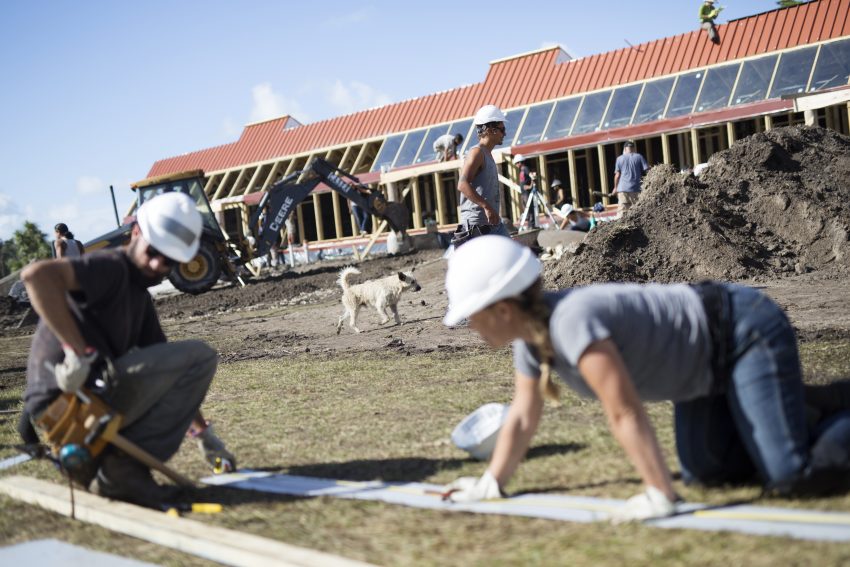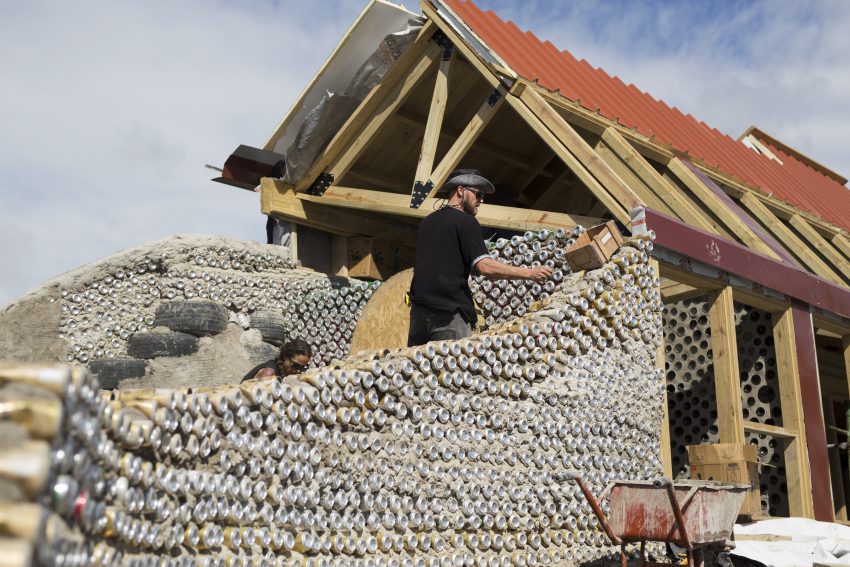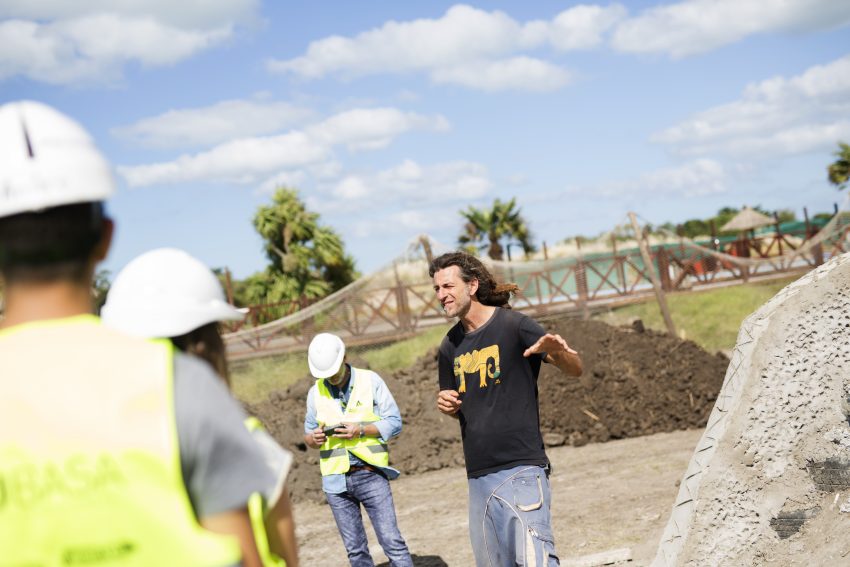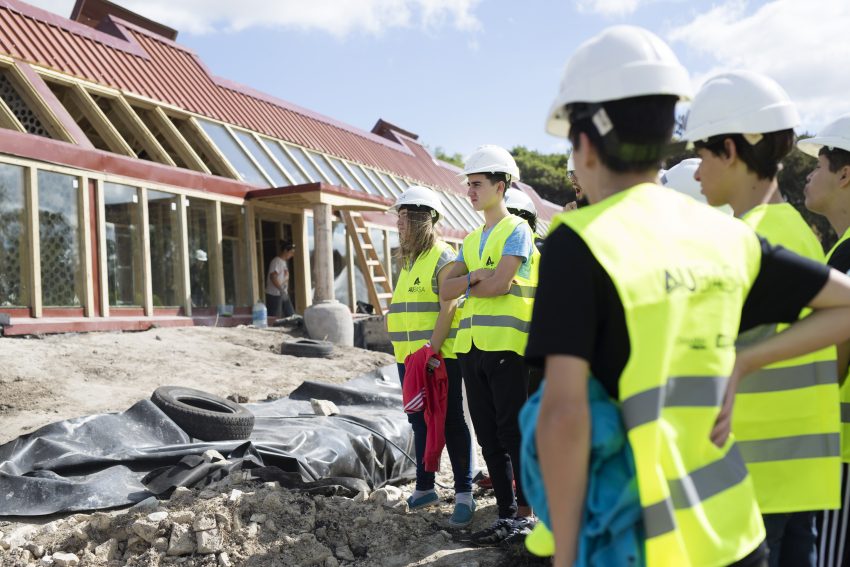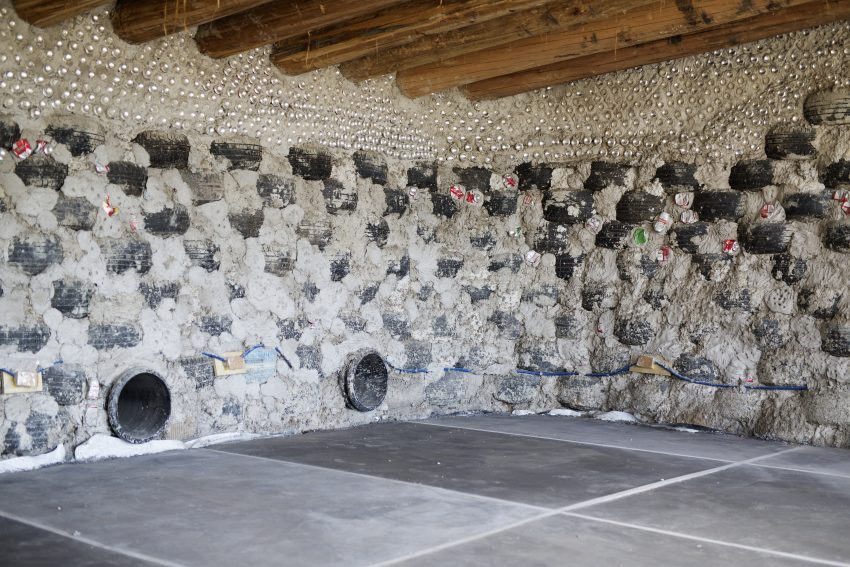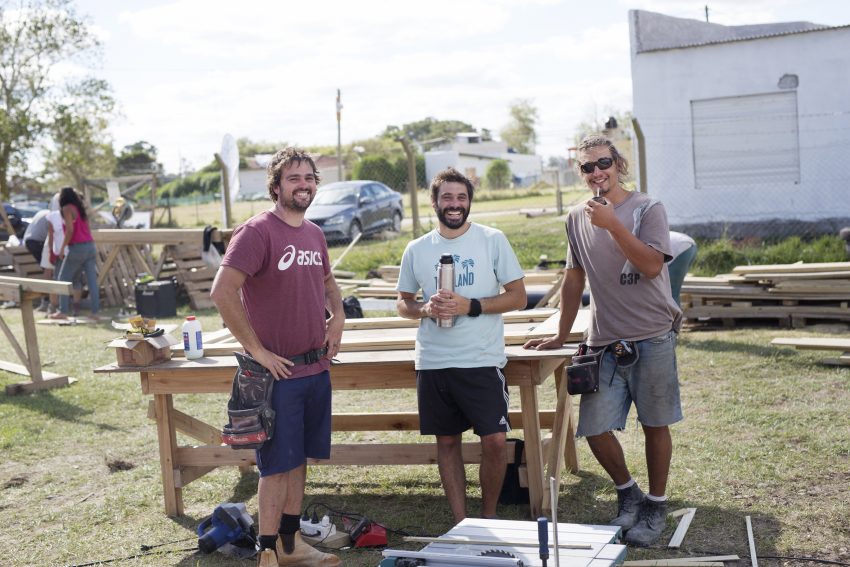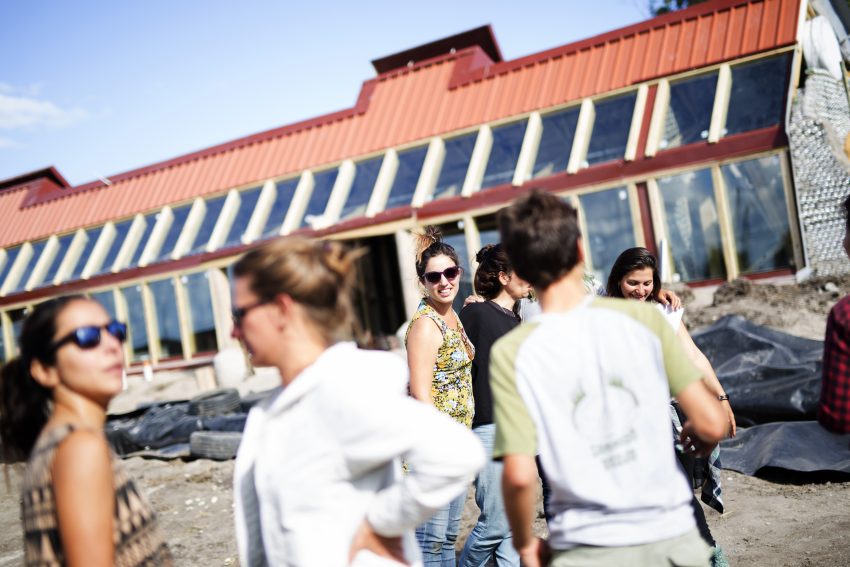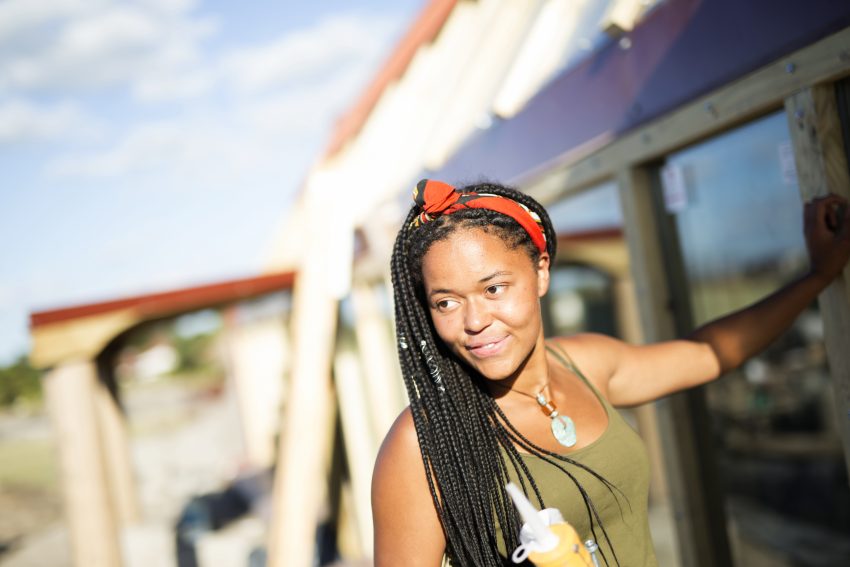
Not long ago, all students got the opportunity to join a joint field trip to the construction site of the first public sustainable school in Argentina. The school, a so called “Spaceship” construction, is not only made of dark soil and timber, but recycled materials like cans, car wheels, beer bottles and cartons. Or 25 tons of garbich if you like.
The self-sufficient school provides its own temperature regulation, water, food and energy. Out of the ordinary, the of 300 m2 building was formed in only 45 days by around 200 people. Inside, massive windows let loads of day light into the classrooms. Along them, an enormous vegetable garden allows tomatoes and cabbage and even trees of banana and papaya to grow. Just like that the kids will get to eat and learn about plants and biology, our green planet and ecosystem. Outside, along the roof, endless solar panels make the school self-supportive with electricity, and at the back site of the building, hidden blue cans will harvest rain water to be transported and used five times. Though the coastal town can offer very hot summers, there are no air conditioner due to the walls of earth absorbing the heat and on the contrary keeping it warm at chill and windy winter days.
The school is created by different partners collaborating including private sponsors. One part exists of Earthship Biotecture and the founder and architect Michael Reynolds from the US, who is the brain behind “the supermodel of sustainable living” with an Earthship community in the New Mexico desert. The initiative to make the school based on his ideas came from the Uruguayan NGO Tagma, which brought Reynolds US team to Uruguay to make a similar school in Jaureguiberry in 2016 turning out to be the first sustainable school in Latin America. The construction is arranged as an academy with people coming from all over the world to learn, live, build and make friends during the 45 days. The school was an achievement for students, teachers and the community, as well as spreading consequences of sustainable living out to far more people attracting 30 000 visitors that very year. To accomplish the school in Argentina, Tagma teamed-up with local NGO Amartya working to promote sustainable educational, the partnership NGO also collaborating with Kulturstudier. Amartya had already set into life a educational plan with the local schools in the area of Mar Chiquita providing sustainability and environmental studies for the kids, when this project came along being the icing on the cake.
This month, 70 small students and teachers will get the keys and step into their brand new breathing school in Mar Chiquita.
-Hilda-
